Artistic licence: the dazzling new Palazzo Luce
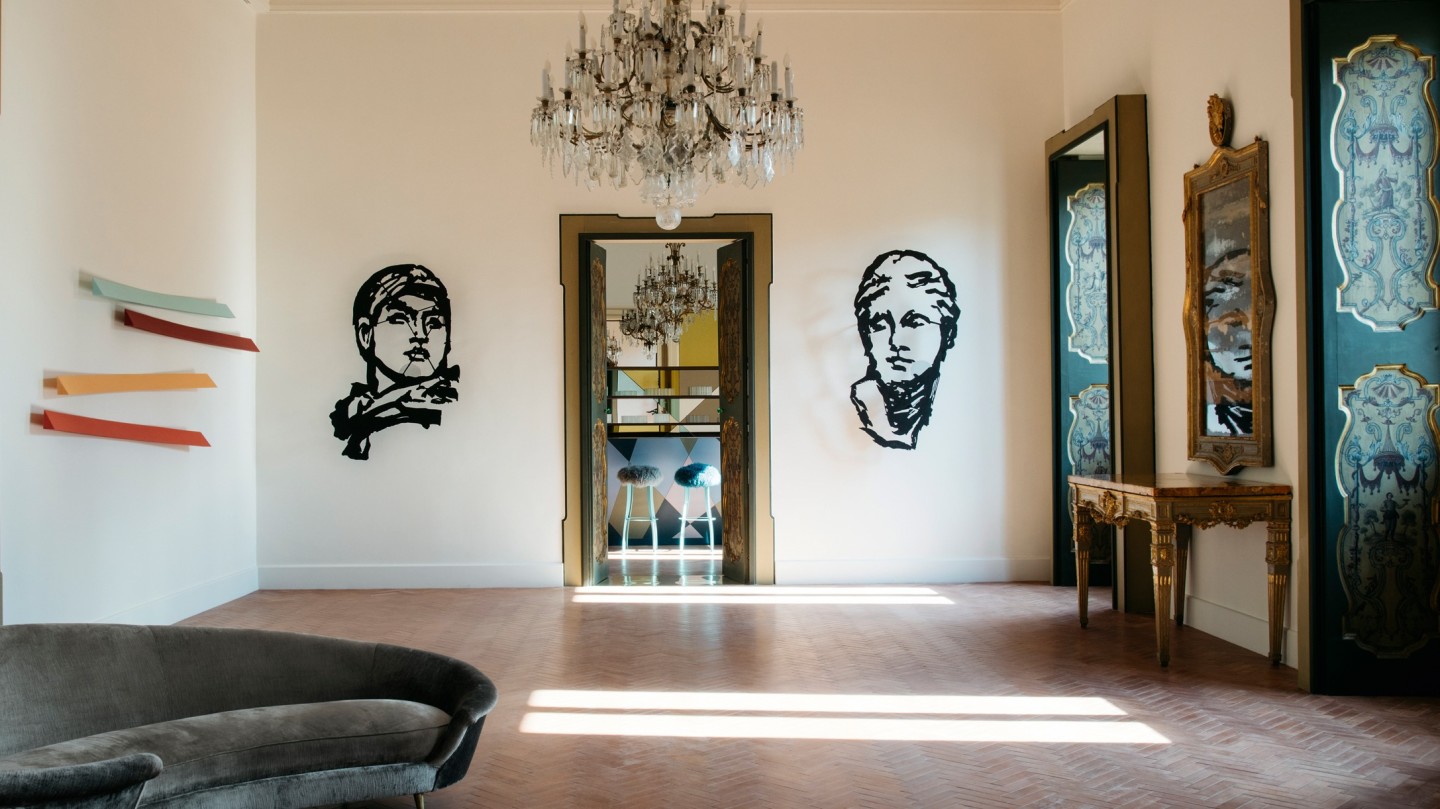
Roula Khalaf, Editor of the FT, selects her favourite stories in this weekly newsletter.
It was a bluebird day in 2016 when Anna Maria Enselmi first laid eyes on the Palazzo dei Conti di Lecce, a sprawling 18th-century jewel with 13th-century foundations, set just behind the Duomo in Puglia’s baroque capital. A Milan-based collector of modern and contemporary decorative arts, Enselmi saw the sun pouring through the 3m-tall windows of the palazzo’s first-floor spaces, thought immediately of the warehouse full of 20th-century furniture she had spent the past 15 years amassing – among which are original, historic designs by Ettore Sottsass and Caccia Dominioni – and knew she’d found it all a worthy home. It was the light, she says, that did it; hence the palace’s rechristening when she acquired it shortly thereafter: Palazzo Luce.
Four and a half years of careful ministrations later, it is ready to welcome guests, a singular holiday residence in a historic city that has emerged as a year-round destination in its own right, a sumptuous seven-suite hotel that’s also available for exclusive use. The palazzo’s 1,500sq m are a showcase of Italian and international art and design – a collaboration between Enselmi and Lia Rumma, one of Italy’s few international-powerhouse art dealers, with galleries in Naples and Milan. Works by, among others, William Kentridge, Marina Abramović, Vanessa Beecroft and Thomas Ruff dialogue with site-specific installations, ceramics by the fashion designer-turned-artist Antonio Marras and bespoke furniture – including a bar that fills an entire room – created by Martino Gamper. All of it in the context of an exceptional architectural restoration, in which are preserved antique maiolica tiles and fresco detailing, gilded and painted cornices and doors, and a walled garden with views over the city’s Roman amphitheatre.
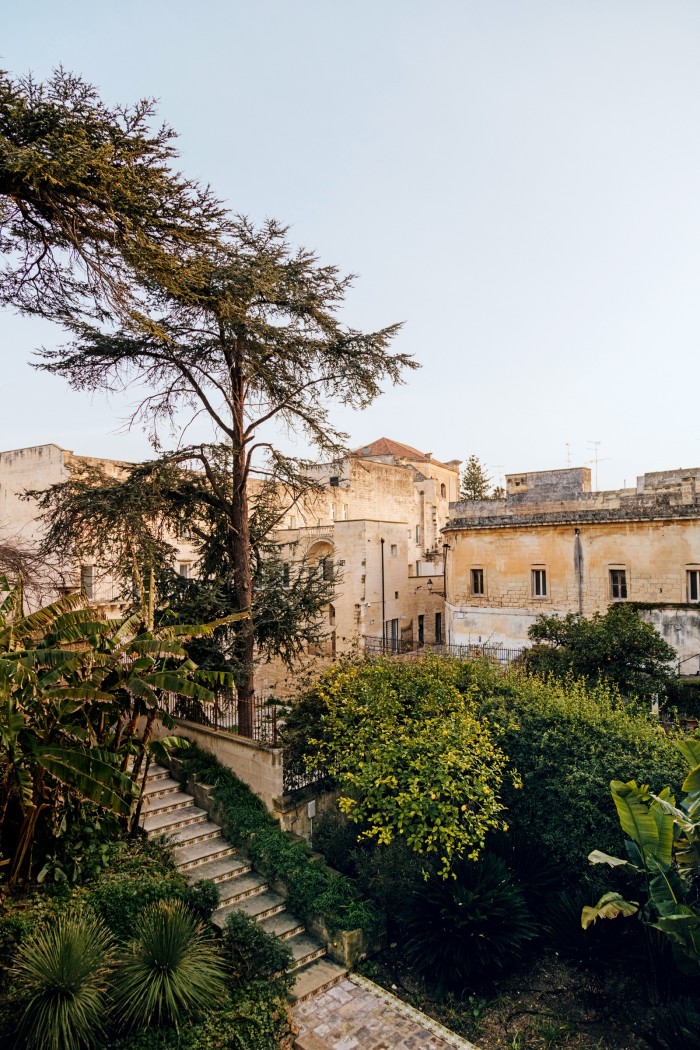
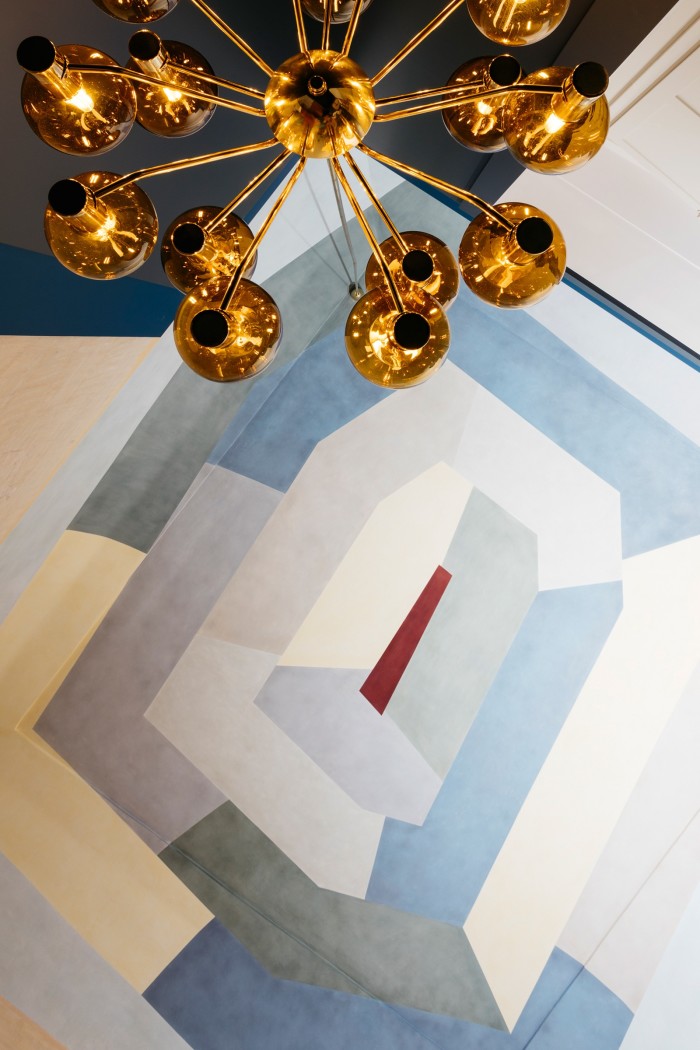
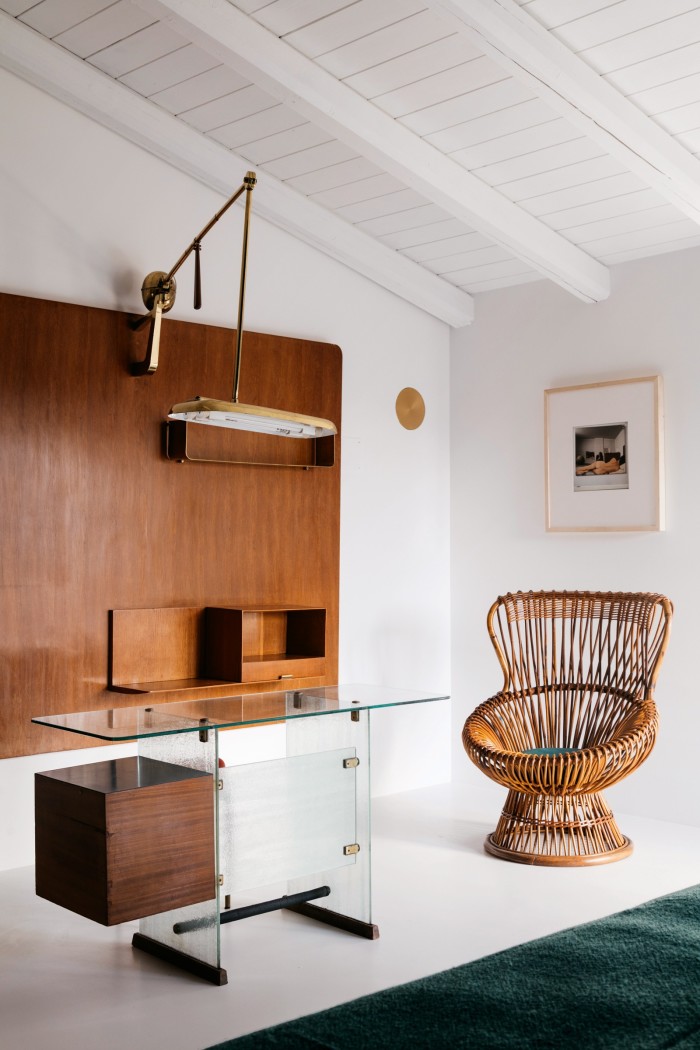
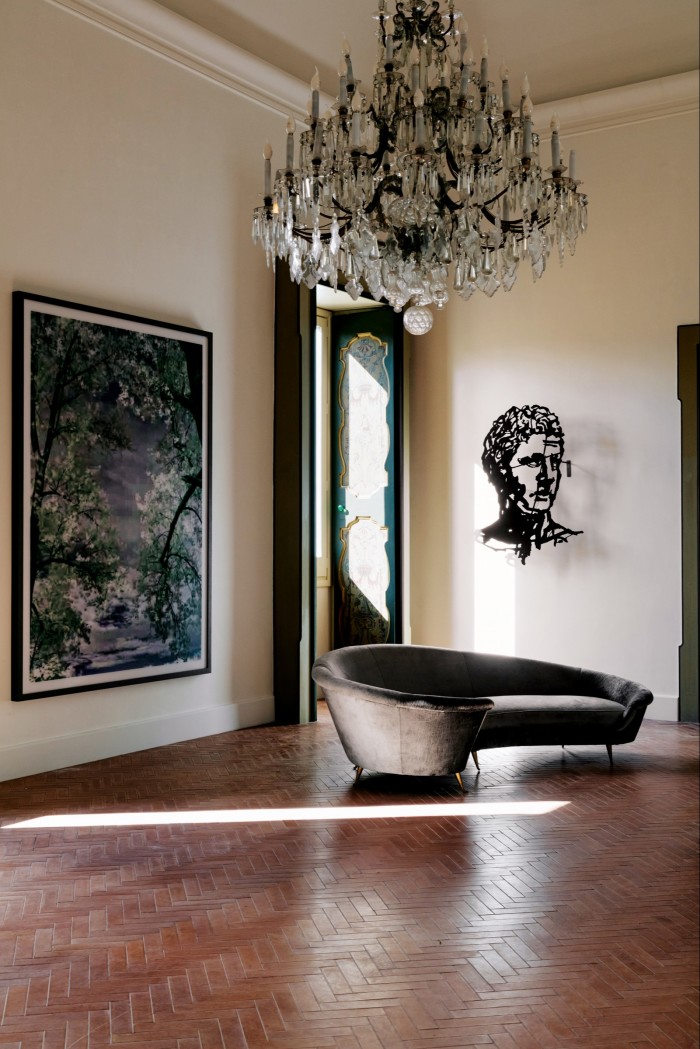
Enselmi has long form with 20th-century Italian furniture, having acquired rare and unique pieces extensively both at auction and from private dealers. “To see them all positioned, finding their home here, has been incredible, in that it has been almost exactly as I imagined,” she says. She knew from day one, for instance, precisely where a spectacular Gio Ponti-signed shelving unit – a one-off in oak and brass, designed in 1946 for the offices of Dulciora in Milan – would live.
The art collection is the result of a mentorship of sorts between Enselmi and Rumma, who is credited with helping put names such as Anselm Kiefer and Joseph Kosuth on international collectors’ radar. “Lia moves quickly – she put me immediately to the test,” Enselmi says. “She wanted to see the palazzo and understand the project, then told me to draft a roster of the artists I saw working within it.” While Enselmi may have steered the wishlist, the de facto artistic direction belongs largely to Rumma. “Nothing in this house is in its place by chance,” Enselmi says. “For Lia, the interactions between each work with the others, and within the environment, have to be flawless. Everything is both reasoned and felt.” She cites the instalment of 10 vintage gelatin prints of Marcel Duchamp, taken in 1972 by Ugo Mulas, as an example of that rigour: “She spent four solid hours on her feet while she shuffled the sequence. Not once did her concentration waver.”
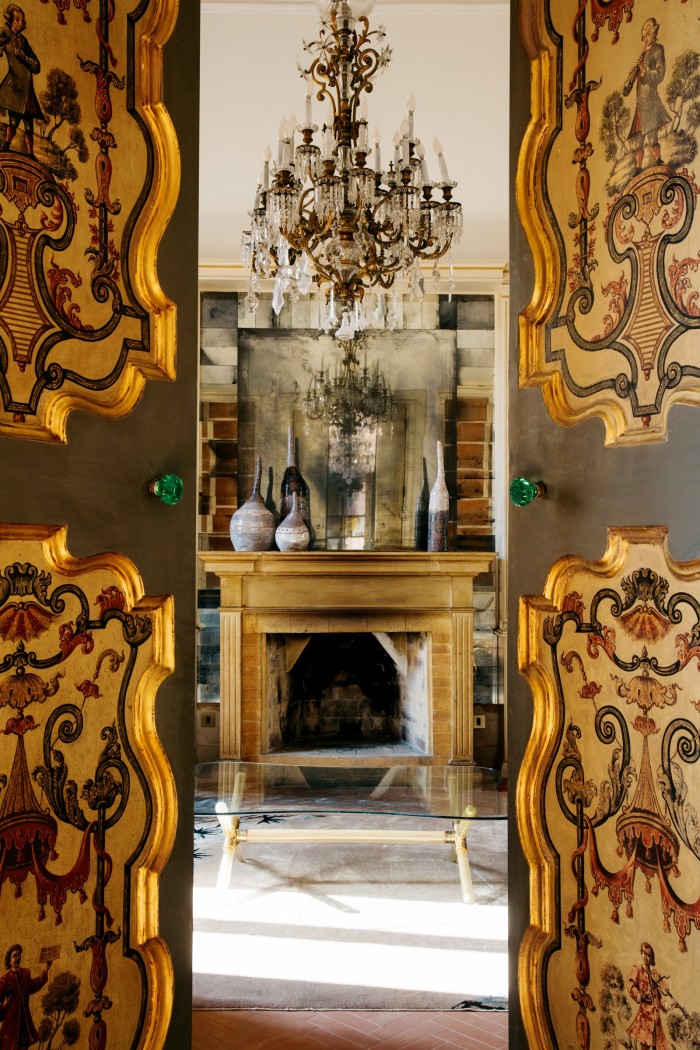
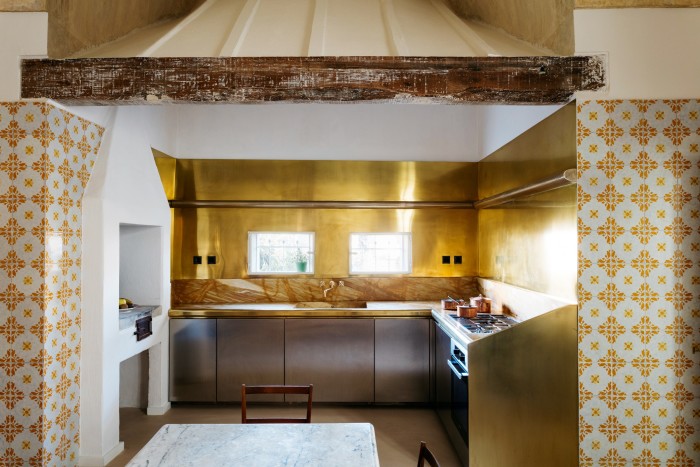
“It’s as [postwar Italian artist] Gino De Dominicis said: ‘It is not I deciding or declaring where each work belongs; it is the art that tells us,’” said Rumma on the day we spent at Palazzo Luce together. “[They] have a life of their own.” We were in a top-floor suite with Mulas’ Duchamp series, having just toured the palazzo’s extraordinary 300sq m terrace, which is shaded by umbrellas and awnings from the Turinese atelier of Guido Toschi; in one planted corner glowed a work in neon by Kosuth. “With design, we look, appreciate it a moment, and then go on our way. Art is something else: it stops you in your tracks, you sit with it, it enters your thoughts and stays there. Of course [the palazzo] is the sum of a whole – but it is the art that drives the interactions.”
All this is amplified by the scale of the spaces. Palazzo Luce’s ceilings soar to 6m; the piano nobile’s corridor extends half the length of a Lecce block. All of the suites have sitting areas and large bathrooms, their floors, walls and ceilings covered in smooth tadelakt or clad in rich veined marble. The two top-floor suites boast stunning bespoke tilework, its vivid-yellow stripes and chevrons underscoring the more assertively minimal restoration the space has undergone. Downstairs, turn along a secondary hall to reach the kitchen and there is a C-print from Beecroft’s VB52 performance series behind a desk designed by Ponti in 1936 for his daughter Lisa; from the ceiling is suspended a pendant light of chain and cement by Konstantin Grcic. A few doors down, one of the largest suites is hung with a group of original drawings on parchment by Marras (who also authored several unique ceramic pieces throughout the palazzo). A monumental print from Thomas Ruff’s press++ series hangs in another suite across the hall; on a facing wall is a black-and-white photograph of Strombolicchio, the famous lighthouse island in the Aeolians, by Mimmo Jodice.
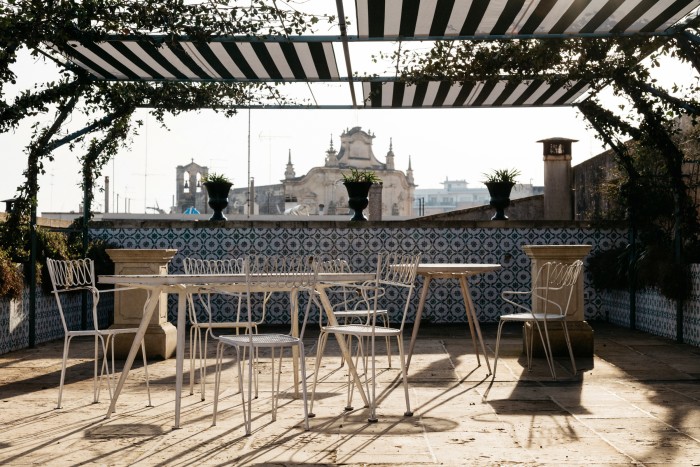
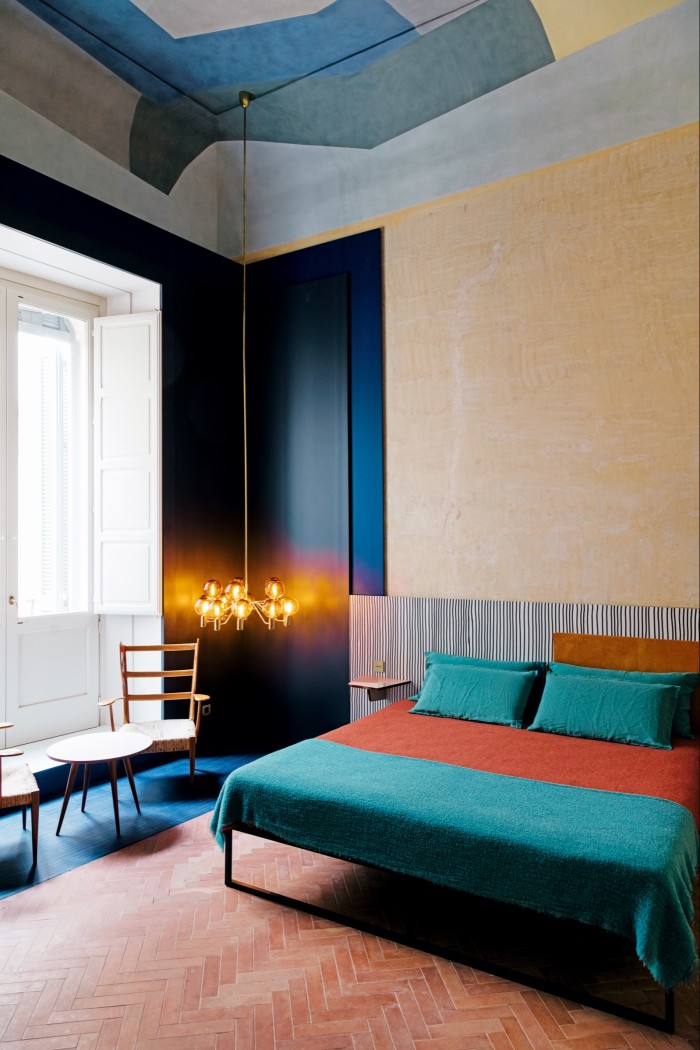
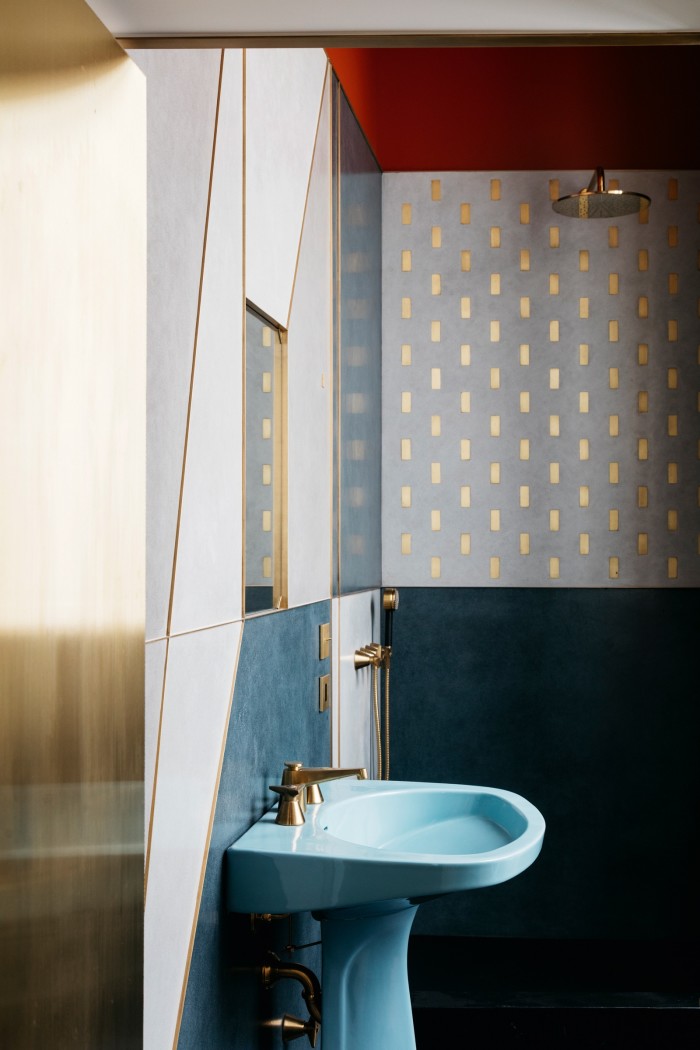
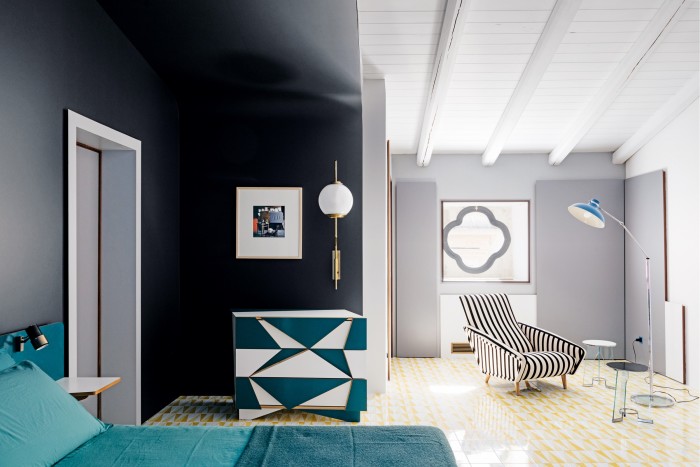
In the enormous main salon – the closest thing to an actual gallery space – a second work by Ruff, this one from his jpeg series, is mounted on a wall between two of the windows. It is effectively a third “view”, the icy hues of its digitally enhanced sky-and-woodland scene reprising the richer ones of the room’s restored painted doors. Facing it is a site-specific piece by Giuliano Dal Molin, a metal-sculpture grouping whose bold colours mutate subtly in the changing light. Four laser-cut stainless-steel Heads by Kentridge, large-format portraits taken from Greco-Roman and medieval history, fill the other two walls. All this is softened by Martino Gamper’s adjacent bar, a whimsical fantasy of mirror, polished brass and colour-blocking inspired by Gio Ponti.
That impressive catalogue notwithstanding, Palazzo Luce is still very much a house for living in, with its two libraries, a games room, and warm local staff, including a chef whose mastery of the Puglian canon of no-frills cooking is unassailable. If you fancy dinner at the kitchen table, that’s fine; likewise in the airy breakfast room (with custom furniture by Gamper), or below in the garden, shaded by banana palms and lemon trees. There is a spa at ground level, cool and silent, with a treatment suite (there are therapists on retainer) and a fitness room. Up on the roof terrace, meanwhile, is a lap pool, whose multi-chromatic tiles – inspired, again, by Ponti – were custom‑produced in Salerno.
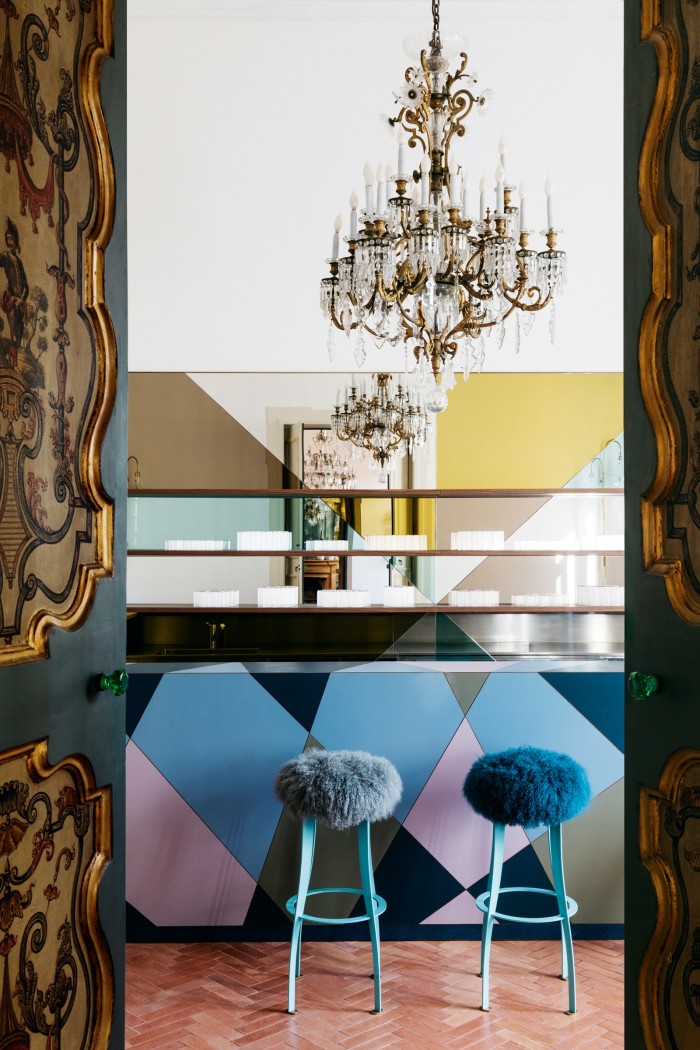
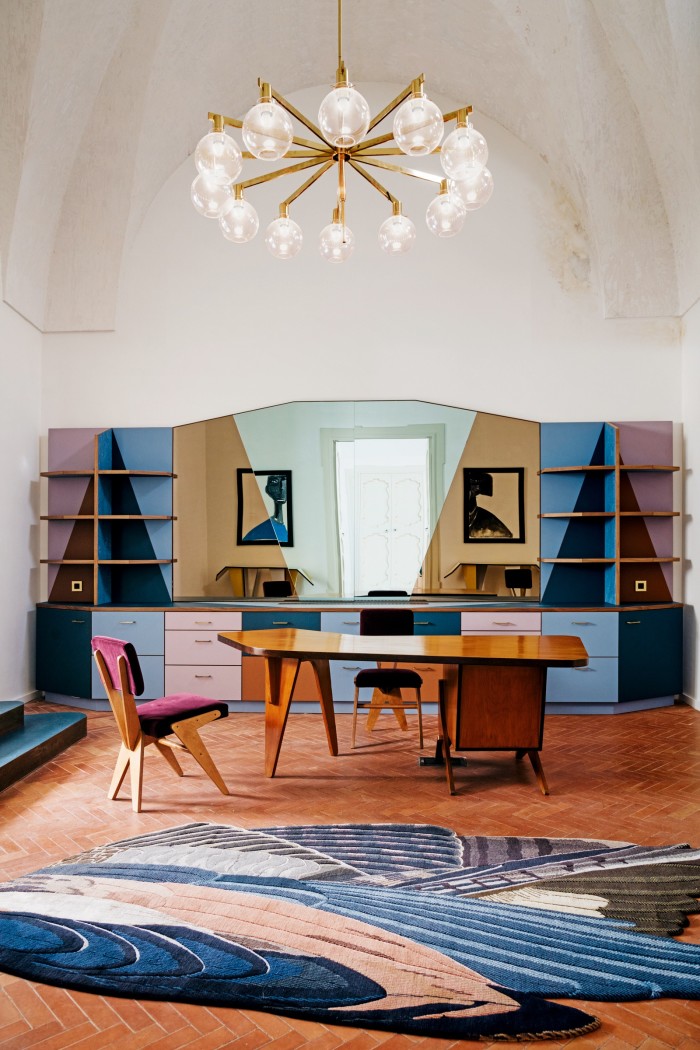
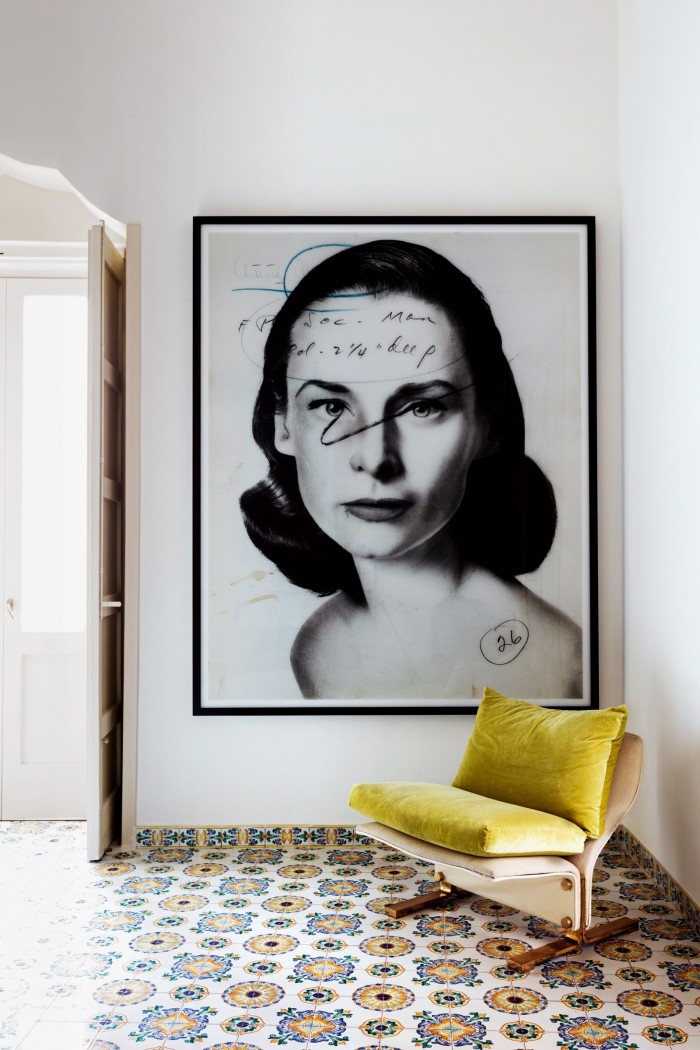
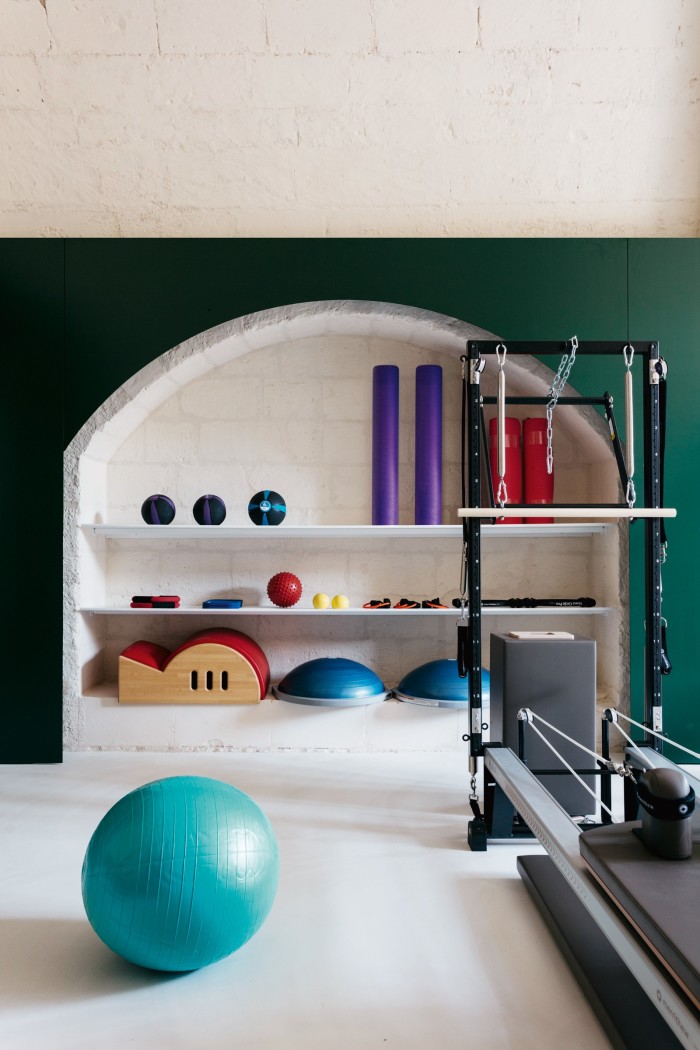
And then there is Lecce itself, just outside Palazzo Luce’s monumental arched doorway, its narrow lanes and wide squares glowing with local pietra leccese limestone – buttery-white by day, softening with the sky to pink in the evening. There are the pleasures of the soaring Duomo and the frothy entablatures of the Basilica Santa Croce, as well as the ones of a caffè in ghiaccio at Doppiozero and honest, delicious home-cooked lunches at Le Zie, where three ancient sisters have presided over an out-of-time dining room for decades. And that, finally, of returning to the palazzo, and immersing in this provocative inter-section of old and new that is sui generis Puglia.
Full rental of Palazzo Luce, €8,000 a day (minimum of three days), palazzolucelecce.com
Comments